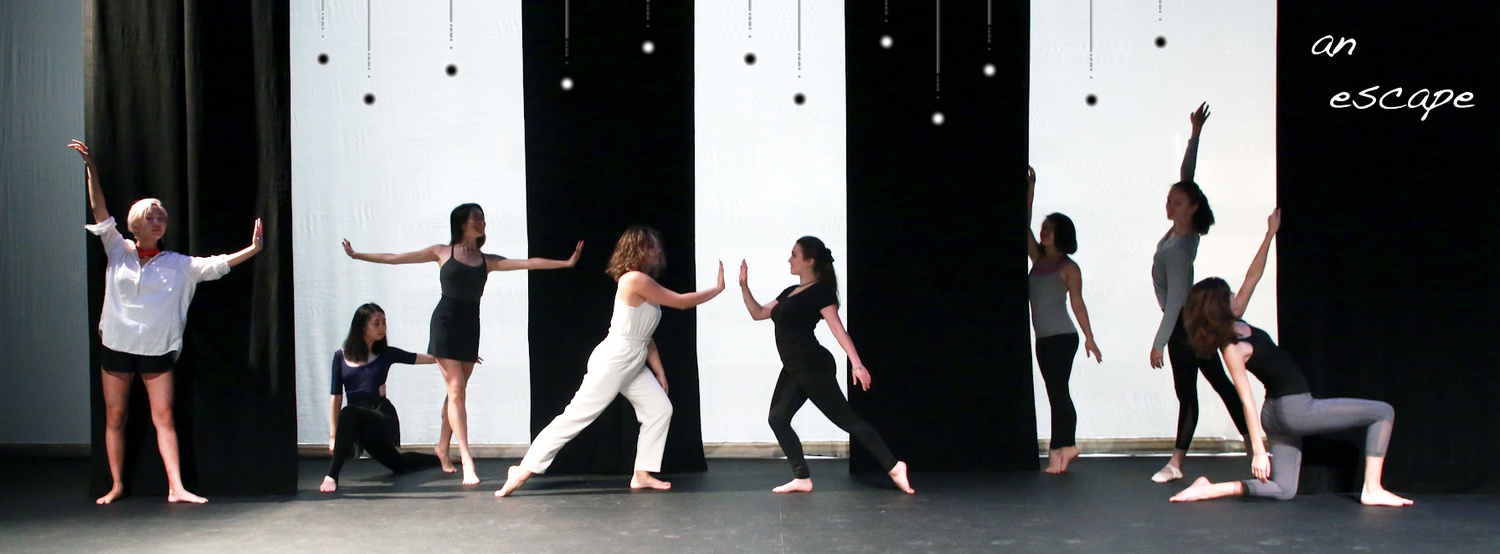
News
Pro-Palestine Encampment Represents First Major Test for Harvard President Alan Garber

News
Israeli PM Benjamin Netanyahu Condemns Antisemitism at U.S. Colleges Amid Encampment at Harvard

News
‘A Joke’: Nikole Hannah-Jones Says Harvard Should Spend More on Legacy of Slavery Initiative

News
Massachusetts ACLU Demands Harvard Reinstate PSC in Letter

News
LIVE UPDATES: Pro-Palestine Protesters Begin Encampment in Harvard Yard
The Harvard-Radcliffe Modern Dance Company Lures Farkas Hall into the Raw, Intimate World of ‘an escape’

Most people can relate to the idea of escape: whether from a physical environment, into a world of artistic expression, or even to a place of comfort among friends and family. It made a relatable theme, then, for Harvard College’s oldest dance organization, The Harvard-Radcliffe Modern Dance Company (HRMDC), who presented their fall show titled “an escape” on October 11 and 12, 2019. Much like the title suggests, the show is a conglomeration of dance pieces meant to convey several different perspectives on the idea of “an escape.” Separated into two acts, the show pushed the boundaries of modern dance through intense expression of emotion and presented HRMDC’s fascinating interpretations of “escape” in a raw and organic fashion.
The evidently deliberate selection of music for the routines corroborated their meanings and enhanced the performances. This notion particularly held true for routines like “Summertime Magic,” an illustration of escaping into arguably the best aspects of summertime: warmth, friendship, and relaxation, choreographed by Cassandra Kane ’21. Accordingly, the routine featured songs like “Escape (The Piña Colada Song)” by Ruper Holmes, an appropriate reference given the theme of the show and also a nostalgia-inducing classic. Of course, they could not have omitted the routine’s namesake “Summertime Magic” by Childish Gambino, inspiring funky and fluid movements with a modern hiphop-feel from dancers Rhea M. Bennett ’20, Jess L. Eng ’21, an active Crimson Arts editor, Mma G. Ikwut-Ukwa ’20, Camryn D. Jones ’22, Lydia Pan ’21, Noah B. Ramos ’21, and David Zhu ’21. The routine also features “Chachacá” by Joseán Log, bringing a bit of Latin flavor into the dance as the third cultural interpretation of “an escape” into “Summertime Magic.”
Sam F. Dvorak ’23, also known as Sam Sam the Magic Man, launched Act Two with an engaging magic trick — a simple yet efficacious sleight of hand — providing a lighthearted segue into the routine “Now You See Me, Now You Don’t” choreographed by Margaret T. Canady ‘20 and Jess L. Eng ‘21. A clear reference to the movie “Now You See Me” released in 2013, the routine initially featured dancers dressed in secret agent jackets and on a mission — this portion of the routine was set to the song “Mission: Impossible Theme” by Michael Giacchino — but then transitioned into witty and humor-filled choreography, as the dancers performed classic magic tricks such as pulling a seemingly endless length of rainbow streamers from their mouths. The fusion of performative magic and dance was a delightful “escape” from some of the more intense and focused routines.
Unorthodox pieces like “press start” and “Bandstand” were a testament to HRMDC’s dedication to supporting innovative student choreography and performance. The show’s program asserted that “press start ensues the simultaneity of a roaming player and someone seated pushing buttons.” Without the program, this description might not have been immediately obvious, but perhaps the subtlety was the point.
“Press start” was a physical manifestation of ordered chaos. The choreography was predominantly made up of workout movements that relied on “resistance” to suggest an imperceptible viscous substance through which the dancers were moving. The dancers’ seemingly spontaneous movements appeared erratic at first glance, but their systematic nature became apparent at a macro-level of observation, a phenomenon that characterizes some of the best varieties of modern dance.
Another standout piece was “Bandstand,” which referenced American Bandstand Dance Contests of the 20th century. A black and white taping of one of the television airings of that competition began the routine. After that introduction, the choreography was set to “Bo Gosse” by Disiz La Peste, who is a French rapper, and included a solo by Owen Torrey ‘21. Owen’s solo intriguingly incorporated a microphone attached to a long cord as his only prop, and the piece diverged into robotic, yet organic maneuvers by the dancers. A highly artistic use of lights and shadows with flashlights effectively accentuated and obscured the dancers at various moments in the piece. “Bandstand” was truly a highlight of the show, displaying Torrey’s innovative choreography.
Though individual pieces varied greatly in style and tone, suggesting a seeming lack of continuity, the common thread of “an escape” still tied them all together. All in all, The Harvard-Radcliffe Modern Dance Company skillfully combined passion with “escape” symbolism via novel choreography that was both thought-provoking and inspiring.
Want to keep up with breaking news? Subscribe to our email newsletter.
